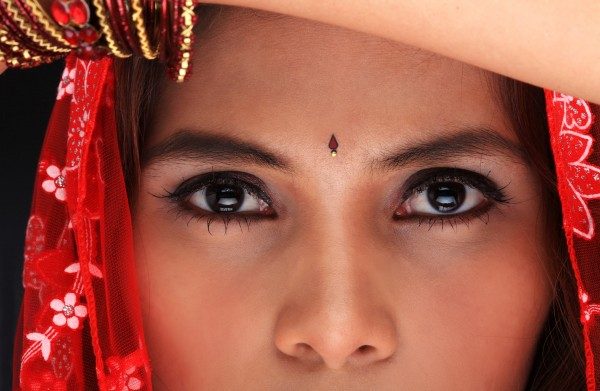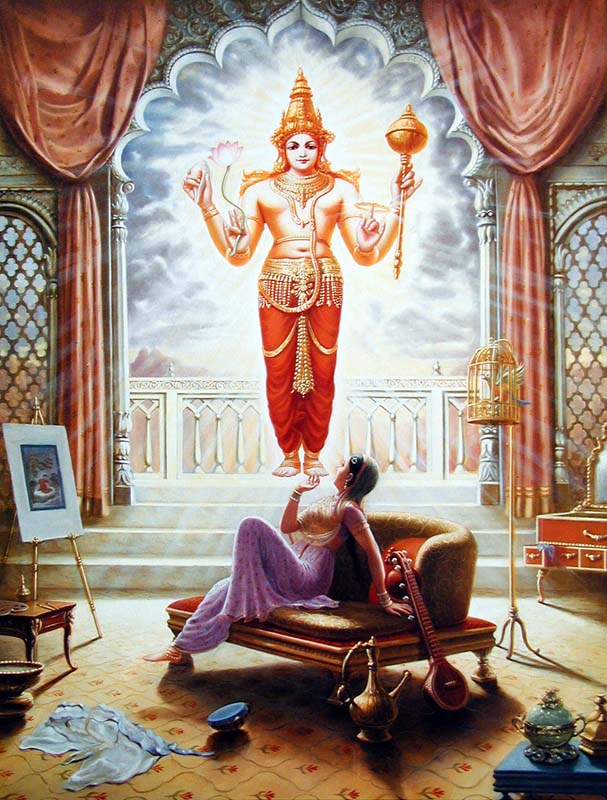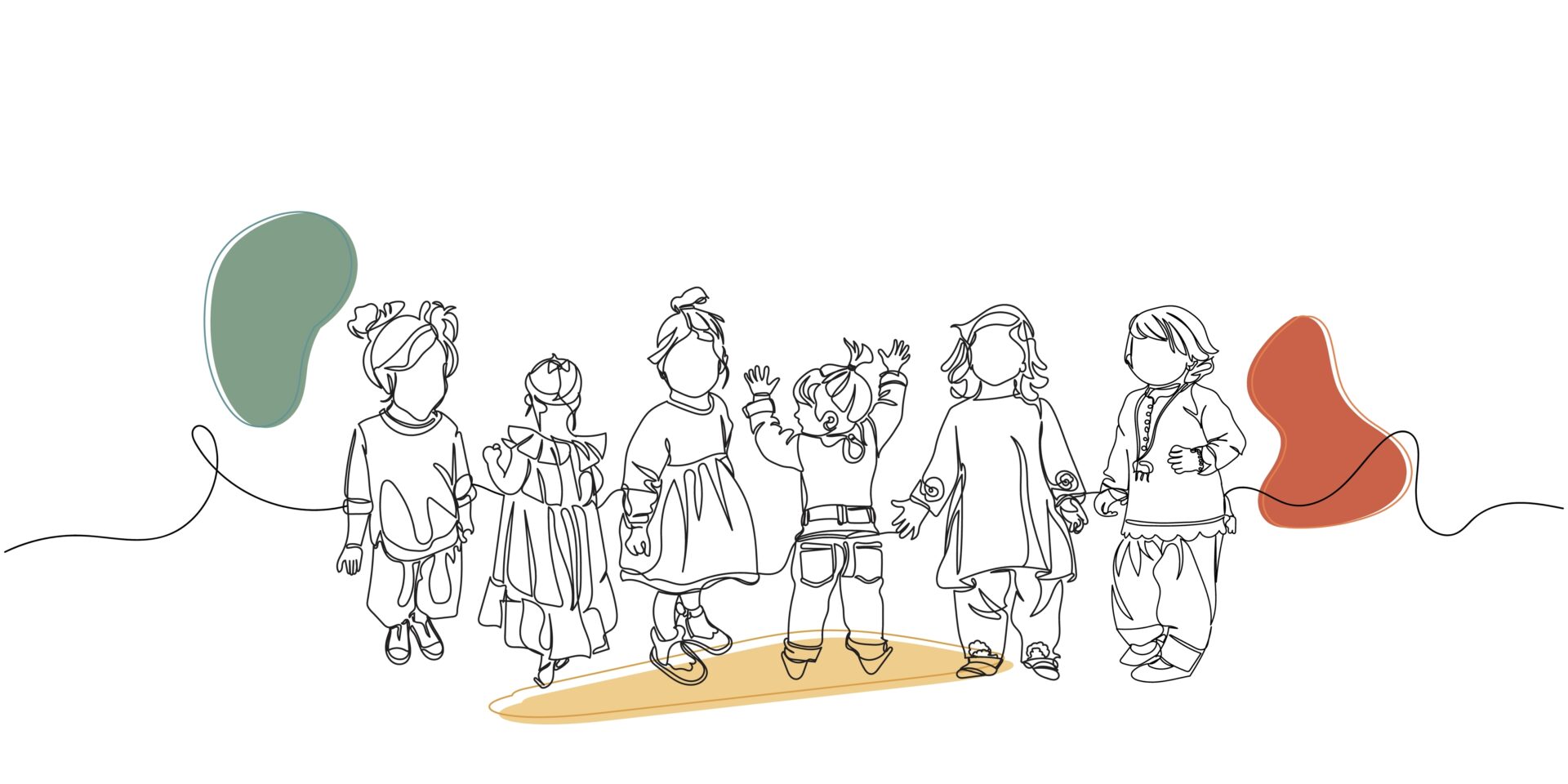
People have strong opinions about women, or the “kanya,” and virginity. This piece was particularly hard to write for that reason.
Within the past few months, as I was gathering research and materials for this article, I met people who coincidentally wanted to speak to me about this very same topic. Some felt that virginity is an archaic construct. Sex, to them, is just another way of enjoying yourself, like eating ice cream or a trip to the beach. How, when, and who it happens with is inconsequential, as long as there is mutual consent. The question of virginity being mediated by any other source, scriptural, cultural, or societal, seemed wrong and disempowering.
I’ve met others who strongly felt that virginity is part of a woman’s sexual currency. Until she has sex, she’s a more worthy mate or is more sought after by men. Waiting to have sex could mean increasing your value in the ‘marriage market.’
Others thought of virginity as a sacred thing, to be saved for a time and person whom you love dearly. Sexual chastity could also be seen as the only foolproof way of preventing the spread of STDs.
I was torn. I wanted to satisfy everyone with my writing because the threat of overwhelming backlash is imminent when we engage in discussion on a topic like this, where people tend to have very polarizing opinions. I feared how others might even view me for writing this. If I am a virgin, one might doubt that I have enough experience to write anything about virginity or sex, or I might just be dismissed as naïve or weird for being a virgin in my mid-twenties. On the other hand, if I am not a virgin, some may judge me as being of “loose character,” that I am probably morally bereft, or may pity me for having made wrong decisions in life.
Maybe I’m writing this to justify my sex life (or lack of one) in some way. But I realized that speaking my truth was more important than what others might think of me.
Discussions around female sexuality with Hindu groups or individuals that I’ve interacted with tend to be fraught with some confusion. First of all, if the topic is even broached, it is usually assumed that “Hinduism says” (whatever that means) that all women must remain virgins, i.e. celibate, until marriage. The major support for this notion comes from the marriage ritual of kanyadaan, which presumably requires a woman to be a virgin in order for the ritual to be valid. I have heard kanyadaan translated as “the giving of a virgin,” i.e. the transfer of a virgin daughter to the bridegroom.
Secondly, while we may be aware of some puranic stories wherein males have sex with women before marriage, outside of marriage, etc., we are not usually aware of women engaging in any such behavior; therefore, we might assume that every woman was sexually chaste until marriage and that this is the prescribed course for young Hindu women as well.
The major issue I see here is the assumption that there is one single type of behavior that suits every single woman, while in other matters of faith, we agree that there are many different paths or practices that suit the idiosyncrasies of every person. Even more importantly, alternative and multifaceted understandings of the word kanya were probably lost at some point – and it is critical that we start to develop a conscious relationship with this word.
The current interpretation of the word kanya as “virgin” speaks to the state of the psyche of those in positions of teaching today, and I do not think this current meaning was uniform across time. Even the English word “virgin” does not always connote something to do with sex.
Kanya is a word that I personally have experienced as a tool for shaming women. I have heard older Hindu women more or less threaten younger women to “remain a kanya before marriage, or else you are not allowing your parents a blessing which they would have gained when you get married.”
Even women who are not directly told things like this do certainly feel cultural pressure surrounding virginity, which they may respond to in different ways. My hope is that through a wider understanding of the word kanya, it can be much more empowering for young women, and can result in less shame surrounding sexuality and self-worth.
Panchakanya: The Five Kanyas
ahalya draupadi kunti
tara mandodari tatha
panchakanya smaranityam
mahapataka nashaka
Translation: “Ahalya, Draupadi, Kunti, Tara, and Mandodari: constantly remembering these five kanyas destroys great failings.”
These five women are referred to as pancha-kanya: the five kanyas. Interestingly, not only were none of them celibate but they all had poignant incidents in their lives surrounding sexuality.
Ahalya knowingly had sex with a man outside of her marriage; Draupadi had five husbands, all of which she was sexually active with, and in addition, was almost raped by Duryodhana in a court assembly; Kunti conceived from devas, i.e. Gods and not her husband, and there are some questions of whether she consented to her first union with Surya deva before she was married; Mandodari had sex with a sage whom she saved from being poisoned before she married/was abducted by Ravana; Tara used sexuality as part of her political strategy.
These are not just small instances within these women’s lives. Their experiences surrounding sexuality are central to the development of their personalities and roles. The way they related with their sexuality is a huge part of why they are considered to be worshipable.
Interestingly, despite having engaged in intercourse, we still use the word kanya to describe them, rather than one of the many Sanskrit words that simply means “woman.” Why? We also could be using kanya to mean “daughter” or “young girl” here, but their fame does not come from their role as a daughter, and most of them did not do anything of huge significance while they were a young girl, so those meanings are most likely irrelevant in this case.
Pradip Bhattacharya explains in his book, Pancha Kanya: The Five Virgins of Indian Epics:
“It is in the account of Kunti’s life that we find a clue about why she is celebrated as a kanya. It is Surya who tells the adolescent Kunti while responding to her summons, that the word kanya comes from ‘kan’ meaning ‘to be satisfied, or pleased, to shine, be liked, or wished for, to strive after, desire, wish’ denoting one who is radiant, desired by all, satisfied and pleased with herself. Because the kanya is empowered to choose her partner, says Surya, she is independent (IV.303.10; 304.13). While giving her the boon, Durvasa had explained that anyone she summoned, whether he wished it or not, would be bound to satisfy her desires (IV.305.98).”
Psychologist M. Esther Harding relates in her book, “Woman’s Mysteries,” throughout ancient history, “virgin” or kanya was a title given to goddesses like Ishtar and Aphrodite, the goddesses of love in ancient Mesopotamia and Greece. Later, they and everything they stood for were denounced as sinful, immoral, of lower pagan religions through the lenses of Abrahamic religions. We also see this in our conception of goddesses like Kali, who is very much feared and misunderstood by people for her relationship with sexuality and the body.
According to Harding, virginity refers to an inner state of the psyche that “remains untrammelled by dependence on another.” This denotes that the virgin is a state of consciousness that resides in every single person. In the case of a woman, a virgin woman would be one who is “one in herself,” an integrated personality who, “belongs to herself…and may not be compelled either to maintain chastity or to yield to an unwanted embrace…This liberty of action involves the right to refuse [physical or emotional] intimacies as well as to accept them. It may be used by a woman who has had much sexual experience; it may be even applied to a prostitute.”
A kanya is a woman, married or unmarried, sexually active or inactive, who does not live as a shadow of her partner, father, or mother. A kanya is not a woman who suppresses her own uncomfortable emotional reactions so that she may manipulate others. She also does not play the role of mother, sister, lover, boss, so that the needs of others may be met. Women who act to satisfy the needs of others, completely stifling their own needs and desires, do not have a sense of who they are once they step out of their roles. A kanya has a role to play that is solely her own, and does not mold herself to satiate the expectations or desires of others.
A kanya remains a kanya even while in love. “A virgin, a woman who is one-in-herself, does what she does – not because of any desire to please, not to be liked, or to be approved, even by herself; not because of any desire to gain power over another, to catch his interest or love, but because what she does is true.”

In this way, Kunti is certainly a kanya. She conceives her sons as she wishes, even though her husband pesters her for more.
Ahalya realizes that she has been seen as a mother, but not as a lover. When she is approached by Indra disguised as her husband, the sage Gautama Rishi, even though she sees through Indra’s disguise, she still has sex with him. But later, she willingly accepts the order of Gautama, her husband, to engage in penance afterward. This is not a shameful acceptance of penance. Penance is not necessarily a punishment but is a karmic reaction for the part of her action that was hurtful towards her bond with her husband. Penance-as-punishment is a time for tapas, a fire and a burning away of that which is holds us from our truth. Ahalya easily could have tried to save face and say, “Well, I was fooled by Indra’s disguise, and I really thought it was my husband.” She could have deflected blame but she took self-responsibility for her desires and the actions that came from her desires, and that is really admirable. Also she stood for her own truth, which was that she did feel unseen in her marriage to Gautama.
Engaging with sexuality is something very necessary for many women, and is an important part of relating to inner femininity in every individual. But one must understand how to do that within healthy limits. Ahalya’s story relates an engagement with sexuality, her raising of feminine passion, while also engaging in difficult penance to explore and reflect on her relationship with these inner sexual energies further. Be aware that her story does not necessarily condone cheating: while chastity does not always suit every woman, not everyone has a rishi (sage) for a husband to relate with on an even emotional and spiritual ground. (I encourage you to read a condensed portion of Bhattacharya’s book for further reading on Ahalya’s story.) Ahalya engages with her own wishes on her own terms. She, too, is a kanya.
Navakanya: The Nine Kanyas
The goddess Kanya Kumari is unmarried, untethered to any male, but is worshiped for fertility. One may see this as a contradiction but here, again, her name as kanya does not denote an absence of sexuality. Her unmarried nature represents, again, that she is a representation of pure femininity, not feminine in balance with the masculine, or not even in the company of masculine. While it is important to have both sides in balance within every person, there are aspects to the feminine, such as fertility, that must be recognized within sacred femininity on its own. Creativity, and thus, great personal growth, comes from being a kanya.
While certain groups or cultures throughout history may have barred certain types of women from engaging in ritual, Tantric ritual is especially potent when performed by or alongside one of the navakanya, or nine types of kanyas according to Guptasadhana Tantra: actress, barber-woman, brahmin woman, cowherd woman, kapalika woman (a woman of a certain Tantric lineage), shudra woman, veshya, washer-woman, woman of the garland-maker class.
While the word veshya is usually translated as prostitute, according to Niruttara Tantra, it seems that any woman who lives freely of her own accord (alone or not), and enjoys herself sexually by whatever means are comfortable to her, is a veshya. It does not necessarily denote a woman who receives payment for sexual acts, nor a woman of low social status. Here again, as a veshya can be a kanya, at least in the ritual sense, the term kanya does not imply chastity per se.
The same text also mentions that any woman accomplished in sadhana of any class can be worshiped or seen as a kanya. This would imply that psychological growth, which is a part of sadhana, is essential to the development of a kanya. One can relate to the self through meditation and “ritual theatre” to bring up one’s “inner history.” One can use ritual to release repressed emotional material, like shame, guilt, and anger and allow it to be seen, re-experienced with awareness, then detached from or released. In this way, spiritual practice, which must involve very intense inward-looking, is also the making of a kanya, the one who is one-in-herself.
The role of ritual is so special within the dharmic traditions, and it cannot be emphasized enough how important it is even on a psychological level. As Marion Woodman points out in “The Pregnant Virgin,” without rituals to make a firm demarcation between what is us and what is not us, between our roles and our selves, we tend to identify as father, mother, etc. rather than as individual human beings. This usurping of one’s individuality by one’s roles is completely against what it means to develop a kanya-nature.
Woodman says, “Liberated from ‘superstitious’ belief in gods and demons, we claim for ourselves the power once attributed to them. We do not realize we have stolen it [and over-identified with it]…For example, a child has acted as a buffer between his parents, for he may fear that his home will disintegrate if he ceases to act as an intermediary. Without realizing it, he has assumed the power of the savior in his own world. When as an adult his boundaries are widened, he will tend to take on that role wherever he goes. He will suffer great guilt when he fails. He may even suffer guilt when he cannot make it snow for when his family has planned a skiing weekend. Such hubris is seen as ludicrous once it is brought to consciousness, but, without consciousness, depression, anxiety and despair fester inside. Instead of leaving other people’s destiny to them and accepting his own, he attempts to take responsibility for Fate and feels inadequate when the door thuds [closed]. The resulting guilt can quick switch to rage…’What do you expect of me? I can’t do it. Carry your own load. Leave me alone!’”
Without the container of ritual to act out the difference between illusion and reality, to help us recognize that certain powers or qualities are a part of us, but not the whole of us, we walk around controlled by the illusion of who we think we are as dictated by our roles. Ritual shows me that I, as the ego, may feel that I have the power to save a person, but I am not the Savior. A kanya is everything without their roles; the unaware person is nothing without their roles. In this way, ritual can be very important in raising awareness of one’s own nature as a kanya.
Sexuality and “Virginity”
It’s hard to know when exactly the understanding of kanya shifted to a purely physical meaning of sexual chastity. How Hinduism is taught these days (by practitioners and non-practitioners alike) is a system heavily influenced by more puritanical or conservative religions, culturally separate from the often catholic sexuality of the dharmic world. There were also sociopolitical forces at work even within the Hindu world that ensured these constraints on sexuality stayed in place because it benefited certain people (not only males) in power within the system.
Where does our definition of what it means to be a virgin come from, anyway? Most will agree that if you have engaged in vaginal sex, you are not a virgin. What about anal sex, or oral sex? Those might seem obvious as a part of non-virginity to some, but not to others. What about fantasizing, kissing and sensual touching? Many people may not include these as activities which constitute a “losing of virginity,” but “Kamasutra” outlines how the adept lover can drive the beloved to orgasm just from touching toes or fingers. Does any sort of touching with sexual intention, then, constitute a “loss” of virginity? What of women whose first sexual experiences were that of assault, abuse, or rape? What does that say of their worthiness — that is, are they still worthy even though they lost their virginity against their will? If we are going to use the word kanya as “virgin, i.e. sexually pure,” as a way to delineate women worthy or unworthy of marriage/relationship, or as a way to delineate purity or impurity, how exactly do we define “virgin?” I have not found any answer to this question.
An understanding of what kanya means influences our beliefs on celibacy and pre-marital sex. As mentioned in both the Tantras and Kamasutra, it is not assumed that every person will have the same sexual desires, nor that every person is suited for a non-sexual life. Every person comes with a different amount of and different types of rnanubandhanas, karmic debts, which dictate how one develops relationships with other people. A person may be inclined to engage in relationships with more people, platonic or sexual, in order to satisfy some karmic attachment they had in a previous life together. In this way, certain people may be inclined to have sexual relationships with more people because of more rnanubandhanas to fulfil.
I have often heard adults tell young people that sexual restraint (as repression) is the only way to spiritual awakening. “Remove those impure thoughts from your mind. Transcend them, because they are holding you back.” But as we have seen from our panchakanyas, this simply is not true. Every person has different needs and needs to engage with sexuality in different ways. Sexuality can be dangerous both of it is forced outwards when the individual is not necessarily comfortable with promiscuity, and also when sexuality is repressed from guilt or shame imposed by others. While we know that it is inappropriate and damaging for very young children to engage with adult sexuality in any way besides innocent “where do babies come from?”-type questions, making sex a vulgar topic for young adolescents can be damaging to self-worth surrounding sexuality later in life.
Brahmacharya is not simply physical celibacy, as it is usually translated. We know that brahmacharins, or young people within the student phase of life, were not shielded entirely from matters of sexuality. Students were taught to be well-rounded and knowledgeable in all of the shastras, including Kamashastra. The “Kamasutra” back then was not the vapid collection of “oriental” sexual positions that it is today, an exotic manual through which tight-buttoned colonizers could use to vicariously live their sexual fantasies. Kamashastra as a domain encompasses matters of etiquette, social customs, sex and gender issues, and romance in addition to sexuality. The famous Khajuraho temple, whose carvings show people in a variety of sexual positions, also contains other scenes from daily life, because these carvings were apparently used as a “textbook” of sorts to introduce young students to elements of life beyond the student phase. Students were exposed to all subjects, and in accordance with the Indian philosophical tradition, encouraged to discuss and engage in question-asking whenever possible.

At the same time, various texts and sampradayas cite the idea that sexual promiscuity is not necessarily physically, spiritually, or emotionally helpful to the spiritual aspirant. I remember reading the following advice from a tantrika to a male student: “Once you see a vagina, you are finished. Its image will pop up in your head when you least expect it. This is neither your fault nor the fault of the woman. It just happens this way, however, female students are generally less compulsive about needing sex and may not be as affected by seeing a penis.” I cannot confirm or deny this, but I could see how that would be very distracting if you are trying to meditate.
In other ways, exploring varying levels of detachment from all sorts of material pleasures, not only sex, is generally recommended for a greater sense of focus or determination in other areas of life. This is not to say that sensual pleasures or bad, but there is a certain level of engagement that is appropriate to people at different times in their life. From a Tantric perspective, sexual involvement also involves a sharing of energies. If the other person does not have wholesome intentions for you (which is not always apparent!), or if you are engaging sexually from a place of seeking to fulfil emptiness in yourself through the other person, sexual involvement will generally drain you of physical and emotional energy and may leave you spiritually “vulnerable” for certain types of sadhana.
“Wherever in the world, a female body is seen, that should be recognized as my holy body,” says the goddess Vajrayogini in Chandamaharosana-tantra. Again, the point to be made here is that there are many sides to the issue of physical intimacy, and there is no one solution that fits every single person. Sex can be a spiritually uplifting act, or it can just be plain sensual enjoyment. Whichever way a woman chooses to engage with sex, we can be clear that ensuring feminine freedom and dignity is of the utmost importance. For a young woman, this could mean sexual promiscuity, complete sexual abstinence, or anything at all in between – and none of this has much to do with being a kanya. A girl’s self-worth is not tied up in whether she has had sex or not when she has sex, with whom she has had sex.
The Kamasutra explains that sex is enjoyable on a physical level and promotes union on spiritual level only when the woman experiences pleasure at the touch of her partner. In this way, sex forced upon a woman, as in sexual assault, child sexual abuse, domestic abuse, or even in more subtle ways, like not wanting to kiss someone but feeling obligated to because you “led them on,” are all unhealthy, whether they happen before or after marriage, or with a woman who is sexually experienced or not. But an understanding of what constitutes consent, healthy sexuality, and comfort in sexuality can only come after basic issues in female sexuality are allowed to be freely explored by young women. I have seen the kind of misconceptions that come later in life from young girls who are told that if they even think about kissing a boy, their mind is impure. These girls also may grow up with anxiety about being touched/not touched by sexual partners later in life, or general misinformation about how their own body works.
Kanyadaan
From what we now know, it depends on one’s definition of kanya as to whether the kanyadaan ritual is healthy for women as a part of marriage or not. If we are using this ritual to impose beliefs on a woman of her lack of self-worth because of sexual experience, this ritual is going to be very damaging to a woman’s psyche well before marriage. We also realize that this understanding may not even be hitting the meaning of kanya properly.
Many may assume this ritual, as “giving of a kanya,” no matter what definition we use of the word, to be patriarchal and therefore harmful to women. Swami Pratyagbodhananda (of Arsha Vidya Gurukulam) told me that in his understanding, kanyadaan was not always a part of the Vedic marriage ritual, but a ritual called hastmilaap (meeting of hands, implying a “meeting” rather than “giving”) was. Whether or not this is true, we cannot rule out the fact that kanyadaan has been a part of Hindu marriage ceremonies for a long time, and is now at least culturally a very important part of the Hindu marriage ceremony.
I would posit that the emergence of this ritual is not necessarily a bad thing. It is a masculine ritual, in which a father who may feel love and care for his daughter, and perhaps protective with a sense of emotional “ownership” may recognize that another male in the bride’s life, i.e. her husband, will now feel this way about her. There is nothing wrong with these feelings, and I think this can be a very beautiful thing for a father or for the parents of the bride. Again, this is “ritual theatre,” in which we recognize the validity of the feeling of ownership, but not the reality of ownership. However, if a male ritual is not balanced with female ritual, we stand at the risk of this being an actual transfer of property, rather than the symbolic daan.
One way to emphasize the kanya part of kanyadaan is to give more importance to the female rituals that precede marriage. In the Indo-Caribbean community, we have a female-centric ritual performed 2-3 days before the wedding called matikor, where the bride and female relatives and friends do puja to Prithvi Ma (Mother Earth) with her as a sort of fertility ritual. Only women are allowed to this ceremony. This ritual also sometimes involves a ritual adornment of the bride by the youngest girl present there, a powerful ritual where the kanya as represented by the young girl mirrors the inner kanya in the woman getting married. The youngest girl is also usually involved in carrying out aspects of the puja. I have read that matikor comes from the word “motichoor,” as in “motichoor laddoo,” a sweet traditionally given out in parts of India as part of wedding festivities. This ritual started because women would get together to make these motichoor laddoos, and would also do femininity-affirming activities like singing or dancing sexually suggestive songs and tassa drumming (again, as a way to venerate, not degrade, feminine sexuality) or just eat, laugh, have fun.
The modern bachelorette party is probably a less-spiritually-aware version of this, but I see how a day of having fun just enjoying femininity, whatever that means to you, with your closest friends, can be very comforting and empowering.
For many Hindu cultural groups within and without India, on the day of the marriage itself, it is prescribed that the bride perform Gauri puja, or worship to the goddess Gauri. This is usually performed a few hours before the wedding ceremony, or early on the morning of the wedding. Gauri Ma is a kanya, and doing her puja affirms their inner power of creativity within the bride, and her own relationship and power gained from this shakti. Sadly, many brides today rush through this ritual, or neglect it entirely. It is also not uncommon for brides these days to start drinking alcohol (like champagne) while getting dressed and on their way to the wedding venue, so even if the ritual is performed, they’re not entirely “there” or present with what is going on.
In this way, the kanyadaan ritual is perfectly all right, but only as long as the woman is assured of what it means to be a kanya; that she knows that her sexual involvement before marriage has nothing to do with her worthiness of being loved; and that her femininity is affirmed before or during another part of the marriage ceremony through female ritual. However, in communities where this understanding is not there, or no female ritual exists, kanyadaan can be disempowering for w*omen.
Moving Ahead
We cannot ignore the implications of how the word kanya has been used to shame young women. This is an issue that is very dear to me, as I have seen how my friends, within the community I grew up in, have been taught that although their innermost self is pure, satchidananda, but the choices they make about their own bodies can severely injure or destroy their self-worth.
Many people outside of the Hindu community, or people who have grown out of these beliefs, may not see issues surrounding virginity as something important, but during adolescence, young Hindu women can really face a lot of anxiety surrounding how they choose or don’t choose to interact in romantic relationship based on what their community has taught them to believe is part of their faith. It is so easy to push rituals like kanyadaan away as a vestige of patriarchal religion, and just roll your eyes and ignore it. But just because you have the privilege of pushing something way in your own life doesn’t mean it still doesn’t exist for others. We tend to hate the teenage versions of ourselves, so when we grow just old enough that it’s socially acceptable to put down teenagers and what they’re going through as dumb and immature, we jump on the opportunity. We shame outwardly the aspect of ourselves that adolescents represent in our inner history. Even today, there are still young girls who are struggling unnecessarily with identity and worth because of a perversion of a concept, the idea of being a kanya that can actually be very inspiring and empowering for them. Pushing away that which we do not understand is not helpful for us or others.
“Psychological virginity releases us from selfish, possessive clinging, and can be attained through surrender to the goddess,” echoes Marion Woodman. This goddess, the inner kanya, is such a source of strength, and it is a disservice to women and men that we do not teach more women that. “In her, sexuality and love are perceived as manifestations of the divine, and that energy in daily life becomes the mystery of transformation.”
How exactly sexuality manifests is up to her and comes from a place of groundedness in what is true for oneself, rather than fear or shame-based attachment to being a certain way.
Here, I must bow to the kanya within me that allowed me to finish writing this most difficult article. She is that in me which beckons to my fear of criticism, failure, and imperfection,
“Come sit next to me for a while. We have something to write together.”




